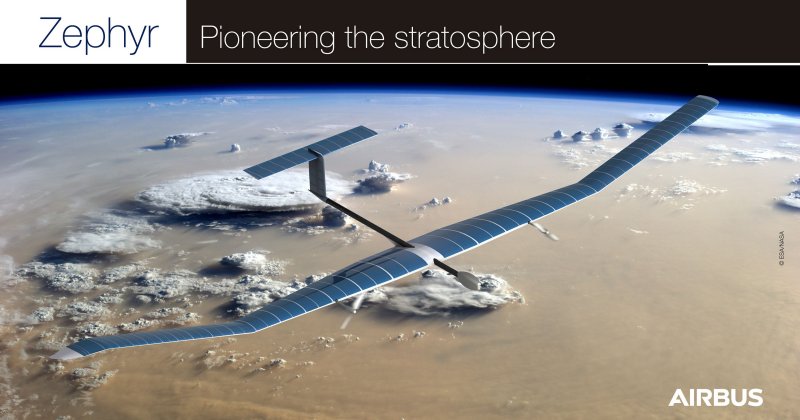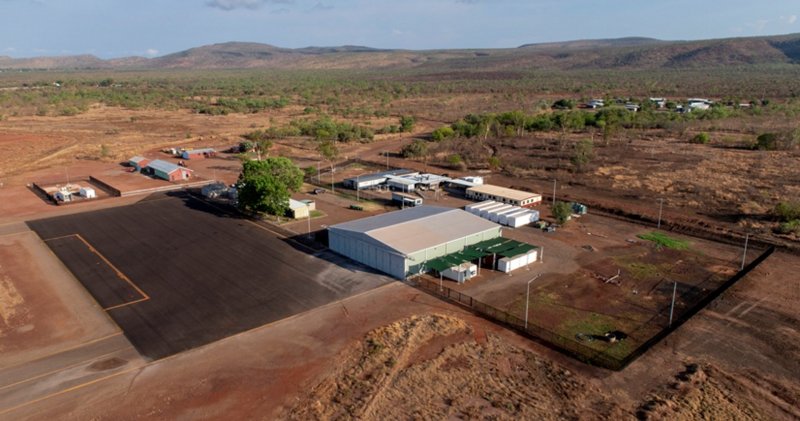
Image: Airbus
The world’s first operations base for Airbus’s Zephyr Solar High Altitude Pseudo-Satellite (HAPS) has been officially established at Wyndham Airfield in Western Australia.
The Zephyr is an unmanned aerial vehicle (UAV) that operates at an altitude of 20,000 metres, above clouds, air traffic and turbulence. The UAV’s solar cells combined with its lithium-ion batteries enable the Zephyr to potentially remain aloft for months.
Two variants of the Zephyr currently exist, the S and T. The T has a wingspan of over 32 metres, and is a featherweight at 145kg due to its carbon-fibre construction. The smaller Zephyr S, which will be used at Wyndham, has a wingspan of 25 metres and is much lighter again – less than 75kg.
In August this year Airbus Defence and Space claimed a new world record for a flight completed by the Zephyr S HAPS – 25 days, 23 hours and 57 minutes; bettering its own record by more than 11 days.
Offering persistent local satellite-like services, in addition to military and commercial applications Airbus says the UAV has applications in disaster management and environmental monitoring. Perhaps it could be used to keep a bit of an eye on companies that will soon be fracking around in WA?
The intention to establish a Zephyr operations base in Western Australia was originally announced in June.
“Securing the world-first Zephyr operating base in WA demonstrates our State has the capacity, geography and local workforce to establish thriving defence and space sectors,” said WA Premier Mark McGowan earlier this week. “This is an exciting project that highlights Western Australia’s potential to become a world leader in the science and technology industries, creating jobs for local workers.”
The WA Government says up to 20 Airbus staff will be based in the local area during operational phases, providing a boost to local businesses.

Image: Airbus
Wyndham is approximately 2,210 km northeast of Perth. Wyndham Airfield was chosen as the site for the operating base due to its largely unrestricted airspace and favourable weather.
“We are proud to see Australia become part of the Zephyr operational network,” said Jana Rosenmann, Head of Unmanned Aerial Systems at Airbus. “The site is our gateway to the stratosphere and will be the main flight base for Zephyr going forward.”
Zephyr Battery Cells – Silicon Nanowire Anodes
In related news, U.S manufacturer of lithium-ion batteries Amprius, Inc. said it is supplying advanced lithium ion cells to the Airbus Defence and Space Zephyr Program. The company states it was Amprius cells that played a role in the Zephyr S’s recent record flight.
Zephyr’s battery technology involves the use of silicon for anodes. While silicon anodes enable much higher specific capacity compared to graphite anodes used in conventional lithium ion batteries, in particle or film structures silicon is unstable and has a very short cycle life.
“Amprius’ silicon nanowire structures overcome this instability and thereby enable hundreds of cycles with specific energies of over 435 Wh/kg and energy densities in excess of 1200 Wh/liter,” says Amprius.
Just as a comparison (and it’s somewhat apples to oranges), the 18650 cells (18mm diameter, 65mm length) used in the Tesla Model S have an specific energy estimated at ~260 Wh/kg. For the Model 3 (2170 cells), it’s been guesstimated to be significantly higher, but nothing approaching that of the Amprius cells used in the Zephyr.

 RSS - Posts
RSS - Posts



I wonder whether WA is going to get some Mk2 Zephyrs, as well.
It would be good, if some Mk2 Zephyrs would also be based in WA…
Very exciting, I believe the future of aviation for NZ is solar powered oblique wing configuration with Cunard and fuselage also solar celled ! large swivelling props mounted on flaps provide distributed propulsion and 200 people load in wing.
If you can understand and visualize this then you should be designing and building this for us! lol.